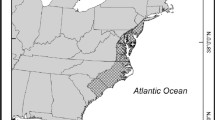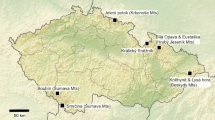Abstract
Previous studies have indicated that epiphytic lichens can be good bioindicators of fire history in tropical savannas. A Lichen Fire History (LFH) Key was developed to assess fire history in areas of cerrado (savanna) in central Brazil. However, the effectiveness and reliability of the LFH Key is much influenced by other lichen determinants. The aim of this study, therefore, was to investigate some of these factors in more detail, thereby allowing better estimates of fire history using the LFH Key. Fieldwork was carried out at the Reserva Ecológica do IBGE, 33 km outside Brasilia D.F., in plots of cerrado denso of varying fire history. Vegetation sampling took place in 20 × 20 m-quadrats within which measurements of the lichen abundance, scorch and phorophyte characteristics, including height, girth and tortuosity, were recorded for all the phorophytes encountered. Bark samples were collected from common cerrado phorophytes and tested for pH, conductivity, moisture content and absorbing capacity, texture and nutrient content. The results show that the greater the impact of fire, the lower the influence of other factors, such as bark characteristics, on the lichens. The strongest determinants of lichens in areas subjected to rare fires or protected from fire are bark aluminium content, bark pH, and microclimatic factors. Using the information gathered from the study, phorophyte species are grouped in terms of their reliability for use in the LFH Key. This study highlights the range of factors which can affect lichen abundance in the tropics, and the relationships between them.
Similar content being viewed by others
References
D.H. Ashton (1986) ArticleTitleEcology of bryophytic communities in mature Eucalyptus regnans F Muell. Forest at Wallaby Creek, Victoria Aust. J. Bot. 34 107–129
J.J. Barkman (1958) Phytosociology and Ecology of Cryptogamic Epiphytes Van Gorcum Assen
C.J.G. Barros (1994) Caracterizačão geológica e hidrogeológica M. Novaes-Pinto (Eds) Cerrado Caracterizačão Ocupačão e Perspectivas (2a edičão) Editora Universidade de Brasilia Brasilia D.F. 265–284
I.M. Brodo (1974) Substrate ecology V. Ahmadjian M.E. Hale (Eds) The Lichens Academic Press New York 401–444
G. Eiten (1972) ArticleTitleThe cerrado vegetation of Brazil Bot. Rev. 38 201–341
G. Eiten (1978) ArticleTitleDelimitation of the cerrado concept Vegetatio 36 169–178
G. Eiten (1994) Vegetačão M. Novaes-Pinto (Eds) Cerrado Caracterizačão Ocupačão e Perspectivas (2a edičão) Editora Universidade de Brasilia Brasilia D.F. 17–73
InstitutionalAuthorNameEMBRAPA (1980) Avaliačão da fertilidade dos solos do Distrito Federal Boletim Técnico no. 74 Rio de Janeiro
InstitutionalAuthorNameEMBRAPA (1987) Levantamento de reconhecimento dos solos do Distrito Federal Boletim Técnico no. 53 Rio de Janeiro
S.B. Gradstein (1992) The vanishing tropical rain forest as an environment for bryophytes and lichens J.W. Bates A.M. Farmer (Eds) Bryophytes and Lichens in a Changing Environment Oxford Scientific Publications Oxford 234–258
M. Haridasan (1994) Solos M. Novaes-Pinto (Eds) Cerrado CaracterizačãoOcupačão e Perspectivas (2a edičão) Editora Universidade de Brasilia Brasilia D.F. 321–344
P.W. James D.L. Hawksworth F. Rose (1977) Lichen communities in the British Isles: a preliminary conspectus M.R.D. Seaward (Eds) Lichen Ecology Academic Press London 295–413
G. Kantvilas P.W. James S.J. Jarman (1985) ArticleTitleMacrolichens in Tasmanian rainforest The Lichenologist 17 76–83
K. Killham (1994) Soil Ecology Cambridge University Press Cambridge
A. Longán E. Gaya A. Gómez-Bolea (1999) ArticleTitlePost-fire colonization of a Mediterranean forest stand by epiphytic lichens Lichenologist 31 389–395 Occurrence Handle10.1006/lich.1998.0200
J. Mistry (1998a) ArticleTitleCorticolous lichens as potential bioindicators of fire history: a study in the cerrado of the Distrito Federal, central Brazil J. Biogeogr. 25 409–441 Occurrence Handle10.1046/j.1365-2699.1998.2530409.x
J. Mistry (1998b) ArticleTitleA preliminary Lichen Fire History (LFH) Key for the cerrado of the Distrito Federal, central Brazil J. Biogeogr. 25 443–452 Occurrence Handle10.1046/j.1365-2699.1998.2530443.x
B.A. da S. Pereira P.P. Furtado R.C. de Mendonča G.I. Rocha (1989) ArticleTitleReserva Ecológica do IBGE (Brasilia-D.F.): aspectos históricos e fisiográficos Boletim da Fundačão Brasileira para Conservačão da Natureza. Rio de Janeiro 24 30–43
J.F. Ribeiro B.M.T. Walter (1998) Fitofisionomias do bioma cerrado S.M. Sano S.P. Almeida (Eds) Cerrado: Ambiente e Flora EMBRAPA-CPAC Planaltina D.F. 89–166
J.G. Romagni C. Gries (2000) ArticleTitlePost-fire recolonisation of dominant epiphytic lichen species on Quercus hypoleucoides (Fagaceae) Am. J. Bot. 87 1815–1820 Occurrence Handle11118419
R. Rosentreter (1989) Indicator value of lichen cover on desert shrubs E.D. McArthur E.M. Romney S.D. Smith P.T. Tueller (Eds) Proceedings-Symposium on Cheatgrass invasion, Shrub die-off and Other Aspects of Shrub Biology Management Inter-mountain Research Station, U.S. Forest Service Ogden 282–289
C.K. Schmitt N.G. Slack (1990) ArticleTitleHost specificity of epiphytic lichens and bryophytes: a comparison of the Adirondack Mountains (New York) and the Southern Blue Ridge Mountains (North Carolina) The Bryologist 93 257–274
H.J.M. Sipman R.C. Harris (1986) Lichens H. Lieth M.J.A. Werger (Eds) Tropical Rain Forest Ecosystems Elsevier Amsterdam 303–309
C.M. Wetmore (1983) ArticleTitleLichen survival in a burned oak savanna Michigan Bot. 22 47–52
J.H.D. Wolf (1994) ArticleTitleFactors controlling the distribution of vascular and non-vascular epiphytes in the northern Andes Vegetatio 112 15–28 Occurrence Handle10.1007/BF00045096
P.A. Wolseley B. Aguirre-Hudson (1991) ArticleTitleLichens as indicators of environmental change in the tropical forests of Thailand Global Ecol. Biogeogr. Lett. 1 170–175
P.A. Wolseley B. Aguirre-Hudson (1997a) ArticleTitleFire in tropical dry forests: corticolous lichens as indicators of recent ecological changes in Thailand J. Biogeograph. 24 345–362 Occurrence Handle10.1046/j.1365-2699.1997.00125.x
P.A. Wolseley B. Aguirre-Hudson (1997b) ArticleTitleThe ecology and distribution of lichens in tropical deciduous and evergreen forests of northern Thailand J. Biogeogr. 24 327–343 Occurrence Handle10.1046/j.1365-2699.1997.00124.x
P.A. Wolseley B. Aguirre-Hudson (1997c) Response of epiphytic lichens to fire in tropical forests of Thailand R Türk R Zorer (Eds) Progress and Problems in Lichenology in the Nineties Bibliotheca Lichenologica J. CramerBerlin, Stuttgart 165–176
Author information
Authors and Affiliations
Corresponding author
Rights and permissions
About this article
Cite this article
Mistry, J., Berardi, A. Effects of phorophyte determinants on lichen abundance in the cerrado of central Brazil. Plant Ecol 178, 61–76 (2005). https://doi.org/10.1007/s11258-004-2493-8
Received:
Accepted:
Issue Date:
DOI: https://doi.org/10.1007/s11258-004-2493-8




